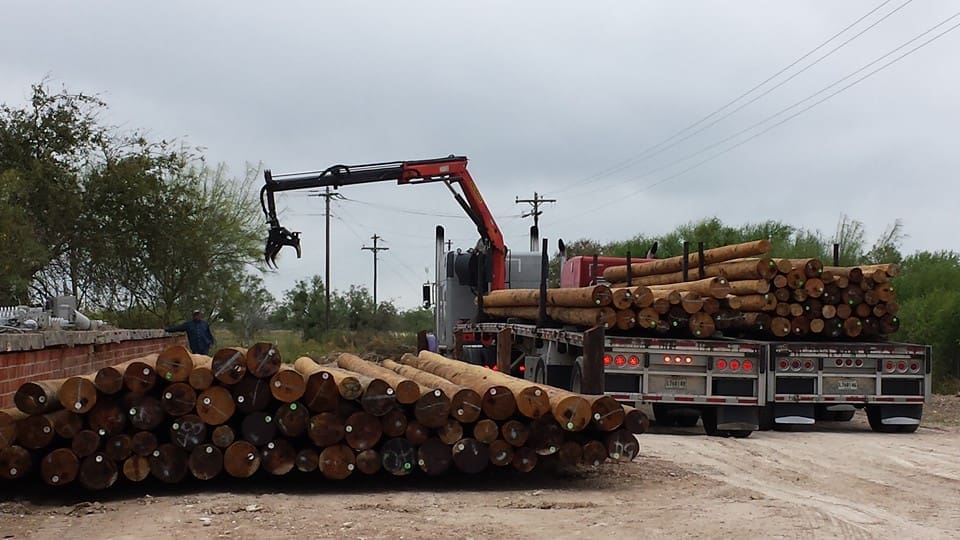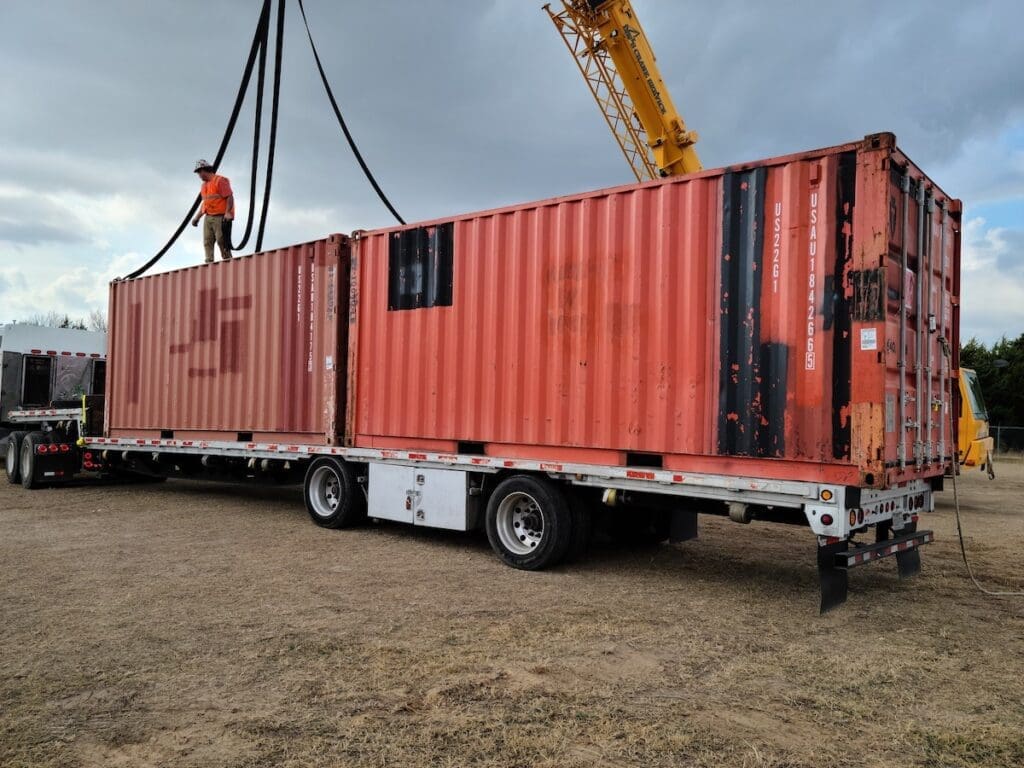Utility poles are part of the American landscape, as common as trees. From wooden poles to steel poles, these structures form the backbone of our utility infrastructure. But as often as you’ve seen them, you may not have thought about them enough to learn that:
1. There are 180 million utility poles in the U.S.
According to Utility Products Wood Utility Poles and Preservative Choices.
2. The tallest utility poles in the world are 1,137 feet tall.
They’re power line suspension towers on both sides of the Yangtze River in Jiangyin, China. Typical telephone poles measure 30 to 60 feet for poles in residential neighborhoods, while distribution poles commonly range from 35 to 45 feet. Along major highways, telephone poles can reach from 60 feet to over 120 feet. The variation in pole height depends on specific utility requirements.
3. The first utility poles were a mistake.
In 1843, Samuel Morse had the opportunity (and $30,000 from the federal government) to prove his new form of communication. He and his team first tried underground lines but the wires were defective. Morse was running out of time, money, and ideas, until one of his partners suggested they string telegraph wires on trees and wooden poles.
4. 4. Certain kinds of wood make the best wood utility poles.
McFarland Cascade, a pole supplier since 1916, believes that the best utility pole wood comes from:
- Coastal Douglas Fir: Strong, light, and virtually knot-free, it’s readily available in lengths from 20-130 feet.
- Pinus Sylvestris: A Scandinavian import, it’s shorter than the Douglas fir, but very straight and very strong.
- Southern Yellow Pine: Shortleaf, longleaf, slash, and loblolly pine varieties all grow up to 100 feet and are easily treatable.
- Western Cedar: Naturally resistant to decay, it’s also easy to climb.
5. Celebration Florida boasts a Mickey Mouse utility pole.
The 230-kV powerline pylonnear Disney World is almost 105 feet tall and can be illuminated at night.
6. Not to be outdone, Canton, Ohio, sports two yellow, 80-foot-tall utility poles in the shape of goal posts.
The town is home to the National Football League’s Pro Football Hall of Fame, after all.
7. John Updike wrote a poem about telephone poles.
Fittingly, it’s called “Telephone Poles.”
8. Ospreys are a problem for poles.
The big raptors like elevated, open nesting sites near water, and utility poles. Unfortunately, osprey nests can cause outages and fires (and nests atop utility power poles are not very safe for the ospreys, either). Some utility companies place deterrents on top of the poles (like orange cones, or the specifically engineered “OFF”-Sprey Raptor Deterrent), while others build alternate nesting platforms above or near the power poles.
9. Bears, too.
They mark their territory by clawing and chewing on the wooden poles. It can become a real problem in bear-heavy areas, but one solution seems to work: leaving old bear-shredded poles up when installing new ones. The bears tend to leave the new poles alone, preferring the old chewed-up ones.
10. And giraffes?
In Atlanta, Georgia, it’s against the law to hitch a giraffe to a utility pole or street lamp.
The Serious Info
Another not-so-fun fact about telephone poles and piles: they’re tough to transport. If you’re thinking about hauling poles, you need to consider the following:
Equipment
Though it’s possible to use other types of vehicles, pole trailers are the standard choice for hauling wood utility poles and pilings. Whether transporting wooden poles or concrete poles, several factors affect transportation:
- Narrower width: A trailer that measures less than the typical eight feet can maneuver better, plus the reduced width helps it to stay in its own lane.
- Single wheel axles vs. a single heavier dual wheel axle: When making a tight turn with single wheel axles, one axle (and the tires on that side) bears more of the load, causing damage in the long-term.
- Easily adjustable trailer length: Anything done easily is more likely to get done. In other words: if your trailer is easy to modify, your driver is more likely to do it, resulting in a better weight distribution.
Weight distribution
The wrong distribution of a load (especially a long heavy one like a load of power poles) can damage a trailer or even cause an accident. With tag-a-long pole trailers, drivers must be especially careful when calculating tongue load: too much weight could damage the tongue (hitch), while too little could cause the trailer to wander or even fishtail.
While being careful not to damage a slender tongue, operators should place the center of the load’s gravity well forward of the axle, so that at least 10 to 15 percent of the trailer’s gross weight is on its hitch.
Capacity
Since the gross vehicle weight (G.V.W.) is the combination of the axle and the tongue load, a pole trailer with a large long tongue can haul a bigger load. For example, if the tongue can carry 4,000 lbs., a trailer with a 12,000 lb. axle capacity would be allowed a G.V.W of 16,000 lbs.
Securement
The Federal Motor Carrier Safety Administration (FMSCA) has specific regulations for securing logs and poles that include requirements like “additional tiedowns or securing devices when there is low friction between logs and they are likely to slip on each other (for example, logs are wet or coated with sawdust).”
Speaking of tiedowns, nylon web straps have enough elasticity to stay tight when the load settles, can be very durable when there’s a short length of chain built into one end, and are easy to use (remember “Anything done easily…”?)
Visibility
The Department of Transportation (DOT) also has requirements for transporting utility poles on public highways. You’ll need to check specific regulations for each state DOT along your route, but most likely you’ll need a combination of flags and warning lights that can be affixed to the poles.
Disposal
If you’re removing telephone poles or pilings, you’ll need to know how to properly (and legally) dispose of them. Although old utility poles are classified as “non-hazardous waste,” each state has strict regulations regarding their disposal, according to the treatment that the poles received. Depending on what chemicals were used, poles may be recycled, taken to lined landfills, or dropped off at unlined landfill facilities. You have to know exactly what you’re carrying in order to make the right choice.
The Right Choice
At Next Exit Logistics, we believe the right choice is to leave utility pole hauling to us. It’s a major component of our business, so we understand pole removal, transportation, and disposal of telephone poles and power poles. We take care of the entire business from end to end, including permits, routing, and special equipment like cranes or boom trucks.
Transporting utility poles isn’t simple, but one call to us makes it easy. To learn more about our services, call Next Exit Logistics at 866-624-2661 or contact us via e-mail.




